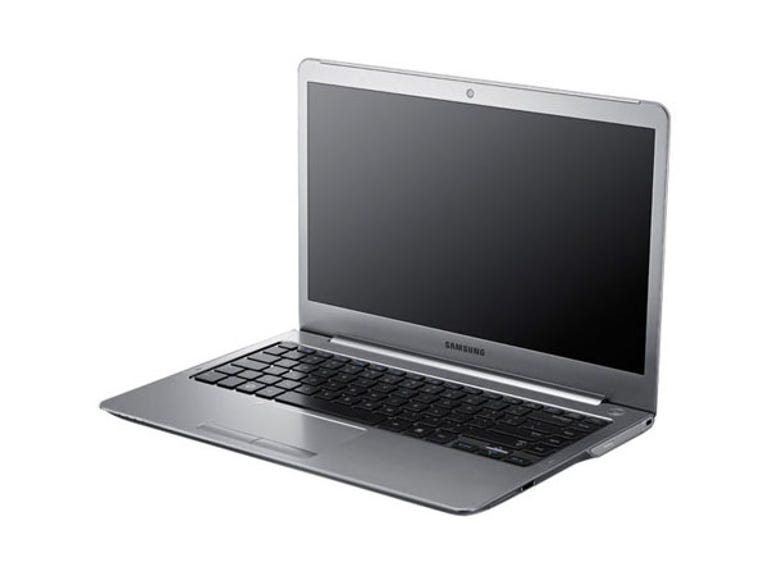 Why You Can Trust CNET
Why You Can Trust CNET Samsung Series 5 Ultra 14-inch review: Samsung Series 5 Ultra 14-inch
If you miss the trappings of a normal laptop — optical drive, large-capacity hard drives, discrete graphics — but want to get in on the ultrabook rush, then the Series 5 Ultra 14-inch will do you well.
How much does 0.7 of an inch matter? Apparently a lot, if you're talking laptops.
The Good
The Bad
The Bottom Line
This is Samsung's 14-inch version of its Series 5 Ultra, something that at first blush might seem a little weird in the face of its 13.3-inch brother. It quickly becomes apparent, though, that this is more mainstream focused than its slimmed-down sibling, the extra space affording it an optical drive, a full-sized VGA port and a Radeon HD 7550M. Just don't confuse this discrete graphics with being capable of modern games; it's nothing of the sort. Still, should you need a little 3D-accelerated grunt, it's got your back.
Connectivity
- USB 3.0: 2
- USB 2.0: 2
- Video: VGA, HDMI
- Ethernet: gigabit
- Wireless: dual-band 802.11n, Bluetooth 3.0
We quite liked the smaller Ultra, and this one steps in time with it; a dark-grey interior, a matte 1366x768 screen and surprisingly capable speakers. We'd hoped for a little bit more, audio-wise, for the 14-inch version, but the volume is still nothing to sneeze at. For proper tone, though, you'll still want to break out your headphones.
You also get the same Core i5 2467M processor and 4GB of RAM, but the 128GB SSD has fallen by the wayside and been replaced with a 500GB HDD, paired with a 16GB SSD from SanDisk as a cache drive. All of these extra components mean more weight, and the 14-inch Ultra tips the scales at 1.79kg, an extra 400g on top of the 13.3-inch version. It doesn't sound like much, but it adds up over time.
Flip the laptop over, and you'll find that Samsung has designed things so a single door gives access to both the hard drive and the RAM. While the first 4GB is soldered to the motherboard, there's an extra slot free, should you wish to expand, and the 2.5-inch hard drive will give you access to higher capacities than the typical mSATA drives.
Application performance
Choose a benchmark: Handbrake | iTunes | Photoshop | Multimedia
Our application benchmarks continue to throw up interesting differences when configurations change within the ultrabook confines. One thing to note is that it doesn't suffer the overheating issue that the 13.3-inch laptop does when it comes to really taxing the CPU with Handbrake, with the CPU left to do the best that it possibly can. The Photoshop test is an odd one, and we wish we could explain what led to such a performance deficit — but subsequent retests returned the same result.
Gaming performance
Choose a benchmark: Metro 2033 | Batman: Arkham Asylum
Performance-wise, the Radeon HD 7550 feels right at home amongst budget laptops. While it's not surprising that it can't manage a consistently playable frame rate in Metro 2033, the more forgiving Batman: Arkham Asylum also doesn't provide a smooth experience. Despite the discrete graphics card, this shouldn't be considered a gaming machine.
Battery life
As can be expected with a heavier hardware load, the 14-inch laptop lasted less time than the 13.3-inch version. It's still a decent showing for what is the only ultrabook with discrete graphics in our charts, but you will get more longevity out of other brands.
Conclusion
If you miss the trappings of a normal laptop — optical drive, large-capacity hard drives, discrete graphics — but want to get in on the ultrabook rush, then the Series 5 Ultra 14-inch will do you well.


